6 Different Types of Wood Screws (With Pictures)
-
Codee Chessher
- Last updated:
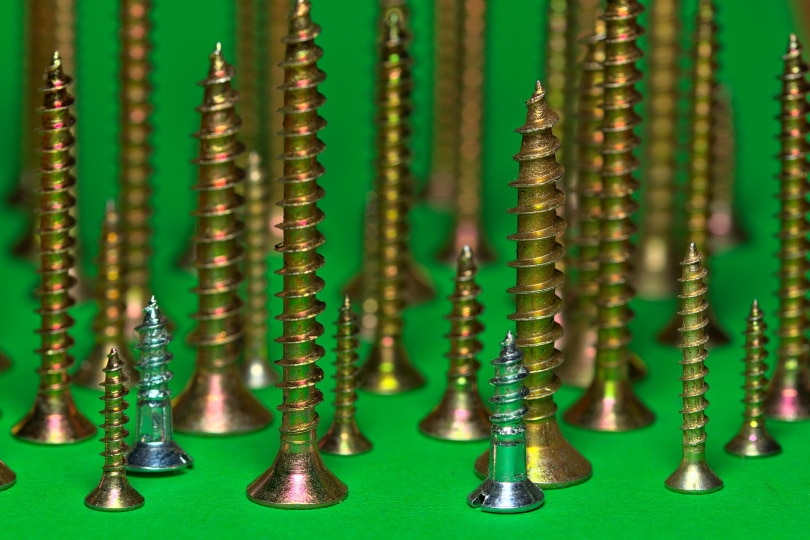
For many people, nails are synonymous with carpentry. Surprisingly, though, screws are more commonly used. There are various types of wood screws for nearly any possible wood project, but that depends on their material, size, and head shape.
On a basic level, these screws are just used to hold together wood, but not many people know precisely they do that. When you screw two boards together, for example, the threads driving into the second piece of wood get pulled upward toward the first piece. This is because screws increase the pressure between the boards, creating a type of bond.
Using screws in woodworking is an effective way to bond wood together without needing to mess around with messy wood adhesives. First, we’ll go over the importance of each primary screw attribute, then list some of the most popular and useful wood screws.
Main Screw Attributes
- Material: Steel is the most common material for screws because it’s plentiful, cheap, and reasonably useful for many woodworking tasks. For jobs outdoors, switching to stainless or another corrosion-resistant material like silicon bronze may be handy. Deck screws designed to live outdoors are usually stainless steel or coated with copper to be corrosion resistant.
- Head Type: The head of a screw determines how it sits when screwed in. For example, oval head screws will jut out a bit in a conical way. Most flatheads, by contrast, are designed to sink into the wood and sit flush on it. Other head types include pan head, mushroom head, fillister head, and more.
- Threads & Points: A screw’s threads and points are extremely important because they have to pierce the wood and bond the wood together without splitting or damaging the wood. How large the threads are determines how much staying power the screw has because they’re what lodges the screw into the wood.
The 6 Different Types of Wood Screws
1. Wood Screws
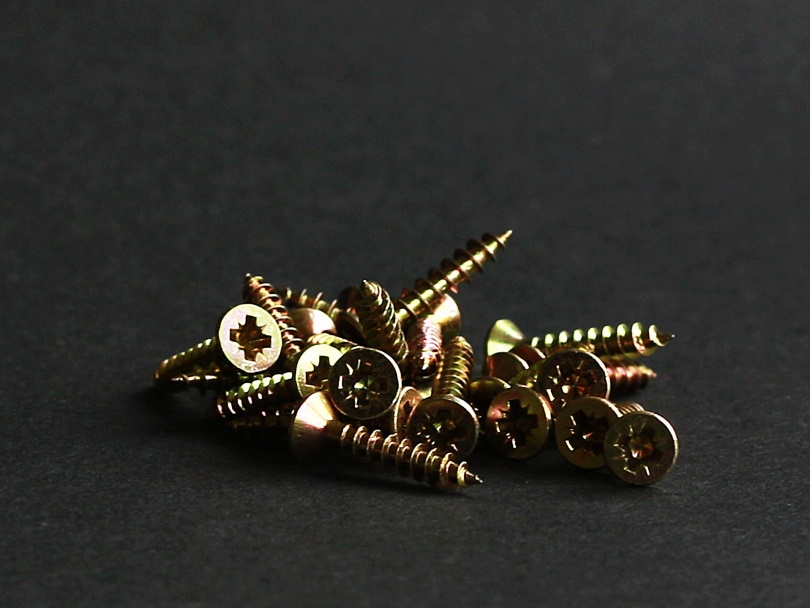
These are the most standard type of wood screws available, and you’ve likely seen them whether you’re a carpenter or not: they have a smooth portion along the shank between the head and thread. This smooth part helps the screw suck two pieces of wood together, producing a firm bond.
Standard wood screws are often used for projects, furniture, and other non-structural applications. These screws usually aren’t plated for corrosion resistance, but corrosion-resistant versions are available for a bit more money.
2. Lag Screws
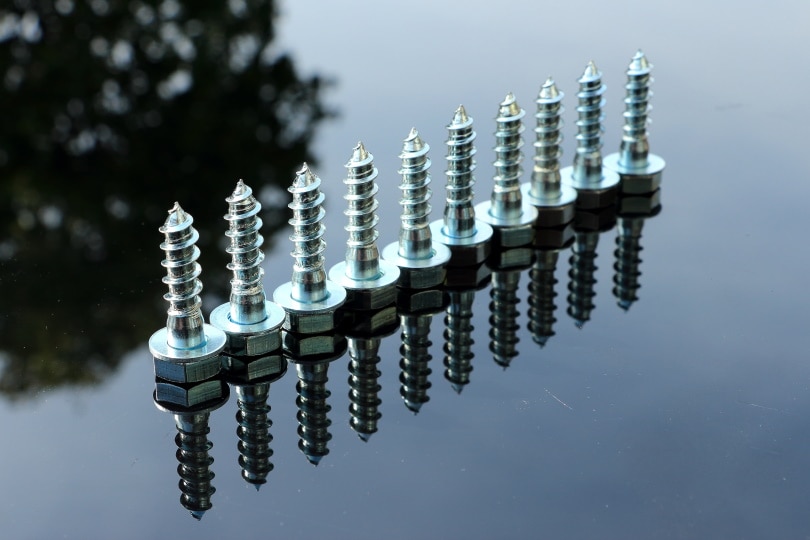
Also known as lag bolts, lag screws have a hexagonal head like a bolt, which is designed to spread out the pressure on the screw. The head helps create extra strength, which makes them ideal for load-bearing jobs.
On top of that, lag screws have threads that are 2-4 times larger than your typical wood screw. This means they can handle very heavy loads, similar to structural screws.
3. Deck Screws
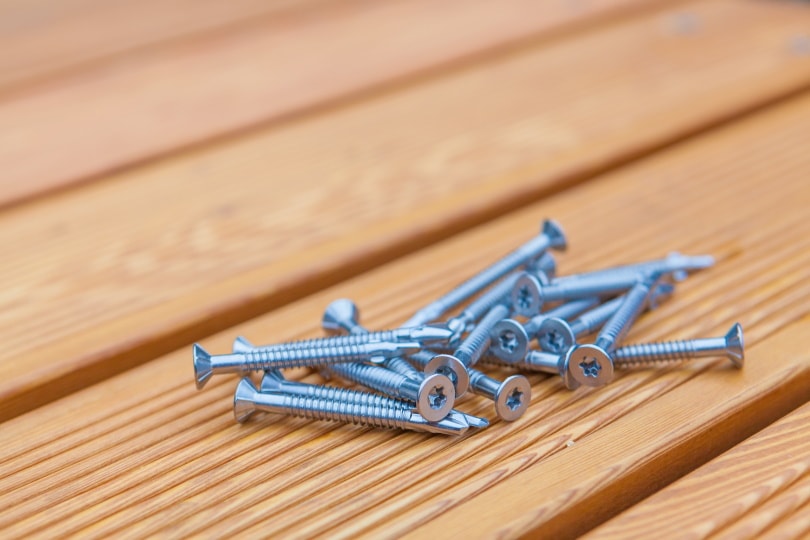
Deck screws are often indistinguishable from regular wood screws, but the crucial difference is in their material, as deck screws need to be weather-resistant. Most deck screws are copper or plated steel so they can hold up to the elements.
Deck screws also usually sport larger heads and threads, which grant them load-bearing abilities. As the name implies, that’s so they can help outside decks hold up as long as possible. It helps that most deck screws are heat-treated, which grants them even more strength.
4. Drywall Screws
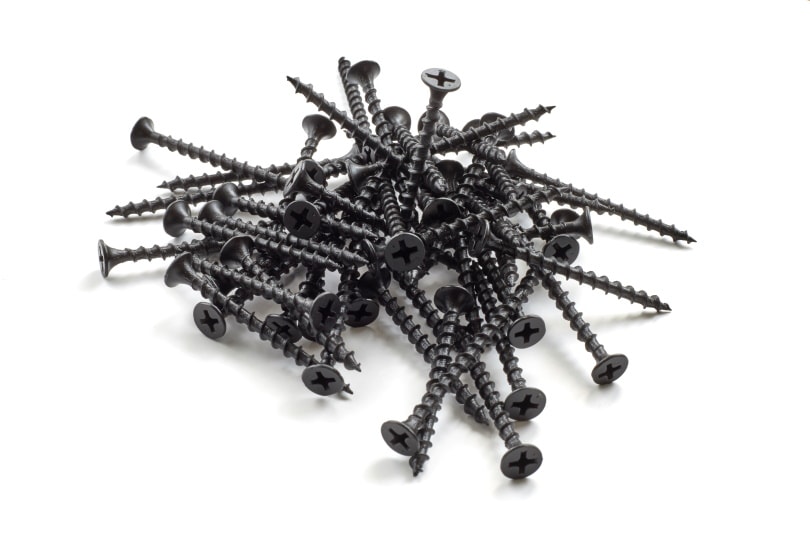
I know what you’re thinking: what are drywall screws doing on a list about wood screws? Well, that’s because carpenters have adopted these screws in place of old-timey wood screws. Old wood screws had dull points and shallow threads that made them annoying to work with, so many carpenters switched to drywall screws.
While drywall screws are easier to drive than some other wood screws, they’re brittle and not designed to withstand much force. This makes them better for temporary projects than as a permanent fastener.
5. MDF Screws
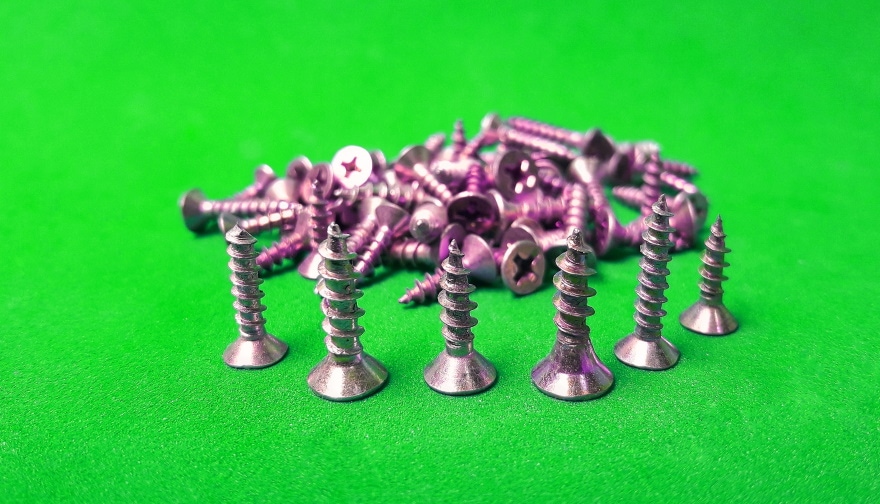
If the name doesn’t give it away, MDF screws are used as the fastener of choice when working with medium-density fiberboard, or MDF. MDF is stronger and thicker than regular wood, so it calls for a longer and stronger screw than you might use for, say, plywood.
You don’t have to use these for MDF work, but it’s recommended. They’re very long with an aggressive thread pattern and point that helps fasten the otherwise tough MDF. Without MDF screws, you’d need to drill pilot holes for each screw because of how tough the wood is.
6. Structural Screw
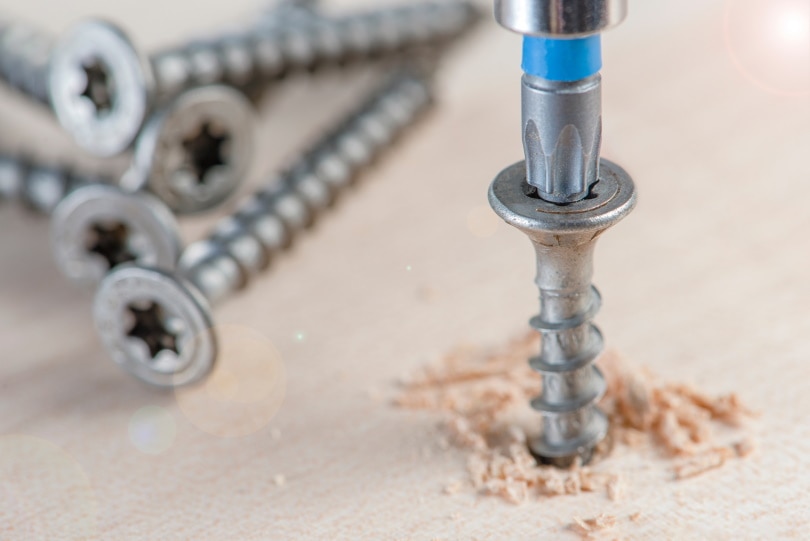
Like lag screws, these screws are designed for load bearing applications. Unlike lag screws, these look like beefed-up wood screws. Structural screws are designed to never break and are sometimes used in place of nails in the framing stage of construction.
While nails are generally more flexible and useful in framing, structural screws are getting very popular because they can withstand the same pressures while increasing structural strength and durability.
Related Read: 5 Types of Wood Glue (With Pictures)
Final Thoughts
Wood screws are some of the most versatile fasteners in the world and hold together the furniture we use as well as the homes we live in. No matter the type of woodwork or carpentry, there are screws that are up to snuff and more.
Featured Image Credit: Pixabay
Contents
